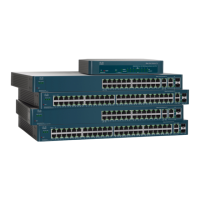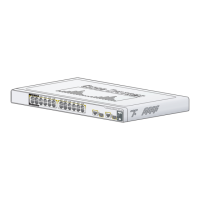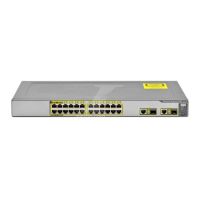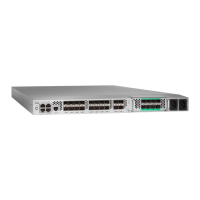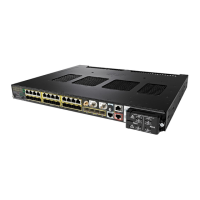Quality of Service
Configuring QoS - General
603 Cisco 500 Series Stackable Managed Switch Administration Guide
28
STEP 2 Click Apply. The interface default CoS value is saved to Running Configuration file.
Configuring QoS Queues
The device supports either 4 or 8 queues for each interface (selected in the
System Mode and Stack Management page). Queue number four or eight is the
highest priority queue. Queue number one is the lowest priority queue.
There are two ways of determining how traffic in queues is handled, Strict Priority
and Weighted Round Robin (WRR).
• Strict Priority—Egress traffic from the highest-priority queue is
transmitted first. Traffic from the lower queues is processed only after the
highest queue has been transmitted, thus providing the highest level of
priority of traffic to the highest numbered queue.
• Weighted Round Robin (WRR)—In WRR mode the number of packets sent
from the queue is proportional to the weight of the queue (the higher the
weight the more frames are sent). For example, if there are a maximum of
four queues possible and all four queues are WRR and the default weights
are used, queue1 receives 1/15 of the bandwidth (assuming all queues are
saturated and there is congestion), queue 2 receives 2/15, queue 3 receives
4/15 and queue 4 receives 8 /15 of the bandwidth. The type of WRR
algorithm used in the device is not the standard Deficit WRR (DWRR), but
rather Shaped Deficit WRR (SDWRR).
The queuing modes can be selected in the Queue page. When the queuing mode
is by strict priority, the priority sets the order in which queues are serviced,
starting with Queue 4 or Queue 8 (the highest priority queue) and going to the next
lower queue when each queue is completed.
When the queuing mode is Weighted Round Robin, queues are serviced until their
quota has been used up and then another queue is serviced.
It is also possible to assign some of the lower queues to WRR, while keeping some
of the higher queues in strict priority. In this case traffic for the strict priority
queues is always sent before traffic from the WRR queues. Only after the strict
priority queues have been emptied is traffic from the WRR queues forwarded.
(The relative portion from each WRR queue depends on its weight).
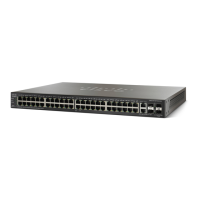
